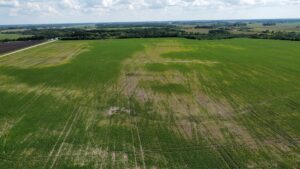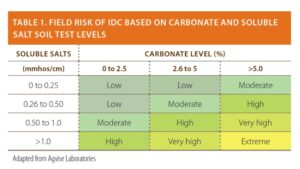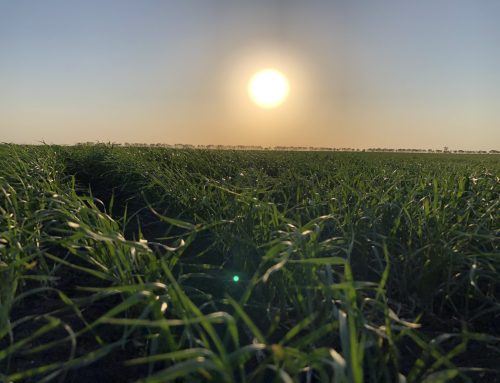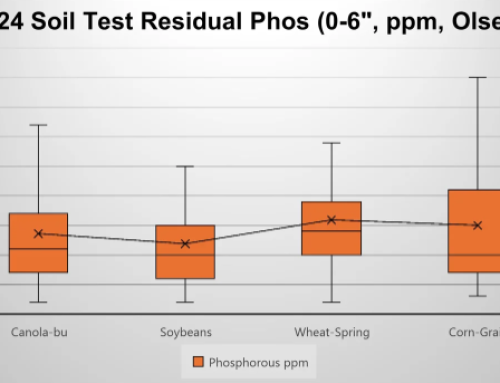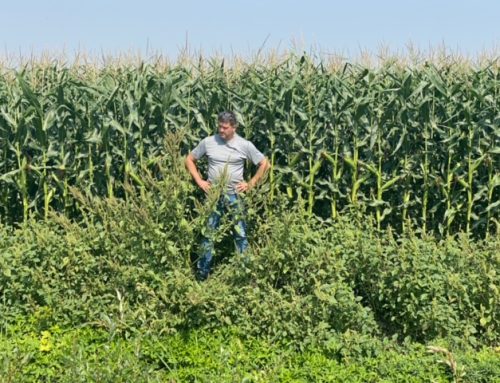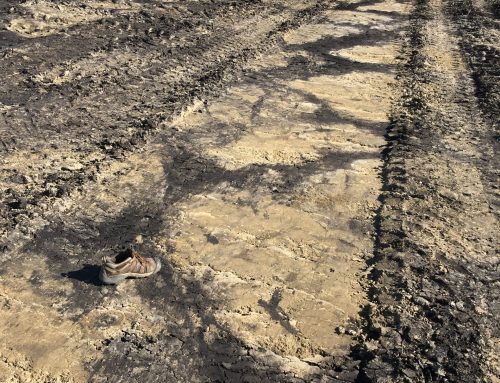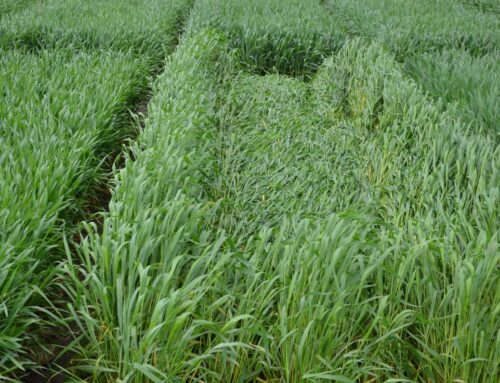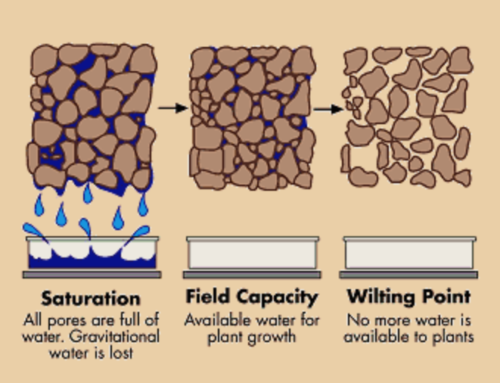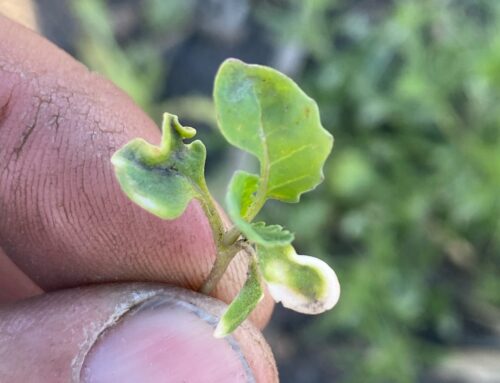Iron Deficiency Chlorosis, commonly referred to as IDC, is a physiological disorder in which plants – especially soybeans – are unable to take up iron from the soil.
IDC can lead to substantial yield loss within affected areas.
Soybean plants obtain iron from the soil by releasing acids from their roots that help solubilize the iron into a form more readily taken up by the roots. In high pH soils with high levels of calcium carbonate, the fine calcium carbonate particles contact the soybean root and slowly neutralize the excreted acid meant to solubilize iron in the soil. The effect is that the plants cannot take up the iron that is in the soil.
Iron is necessary for the formation of chlorophyll, which is the green pigment in plants necessary for photosynthesis to occur. When the plant does not take up enough iron, chlorophyll synthesis is inhibited and yellowing begins to occur between the leaf veins. Because iron is not mobile in the plant, the deficiency is observed in the youngest leaves first. When weather related, the deficiency may be temporary with no effect on yield. Under more severe conditions, both growth and yield are affected.
Symptoms appear as yellowing young leaves with veins that remain green. The older trifoliate leaves also remain green. IDC can be confused with other problems such as atrazine injury.
With atrazine injury, however, the yellowing will be on the lowest leaves and the upper leaves will retain their green color. Other causes of yellowing that should be considered include nitrogen deficiency, potassium deficiency, the temporary yellowing sometimes caused by mid-season glyphosate applications, and soil carryover injury from Group 2 ALS inhibitor herbicides.
When IDC persists or is especially severe, leaves turn white and plant growth may be severely stunted.
Root rot often occurs on plants suffering from IDC. This is thought to be due to the increased susceptibility of chlorotic plants to root pathogens.
Cysts of soybean cyst nematodes, which are favored by high pH soils, are often found on plants showing IDC symptoms.
Research indicates that the following variables are associated with IDC problems:
- History of IDC in a field
- High soil pH (> 7.5)
- Saturated soils
- Low soil temperatures
- High clay content soils that remain wet, or low, wet areas of the field
- High calcium carbonate equivalents and high soluble salts as reported by a soil test
- Residual nitrates from previous crops
In-season rescue options for IDC are limited, so waiting until the plants recover on their own is the most common practice. The best method for IDC control is prevention, in which selection of tolerant varieties is the primary option. Other options for control include heavier seeding rates, improved drainage, and practices that reduce soil N levels, such as cover cropping.
Soybean cultivars vary in their ability to acidify their root zone and take up iron. If your soil test carbonate and soluble salt levels meet at a “high” risk category in Table 1, aim to select a tolerant variety, designated by the Manitoba Pulse & Soybeans Growers Association. A combination of high soluble salt (>1.0 mmhos/cm) and carbonate (>5.0%) concentrations in the soil indicate an extreme risk of IDC.
Iron chelate products are also on the market for IDC prevention. Research from North Dakota State University has shown that in-furrow iron chelate products, such as Soygreen (2-3 lb/ac of FeEDDHA) can offer some protection. However, significant yield loss can still occur when varieties are susceptible to IDC. As well, foliar sprays have proved to be ineffective, since iron is unable to translocate within the plant.
If chlorosis is present early on and plants recover by the V5 to V6 stages, yield loss will be minimal, but if symptoms persist beyond these stages, more significant yield loss is likely to occur.
In summary, there 4 main ways of combating IDC on the farm:
- Variety selection
Soybean varieties vary greatly in their tolerance to IDC. The most successful management strategy is to select a soybean variety with tolerance to IDC.
Most seed companies report IDC tolerance values for their varieties. - Minimize the amount of nitrate carry-over from the previous crop
Excess soil nitrates can worsen an IDC problem by furthering inhibiting the plants ability to take up iron. - Apply iron as EDDHA iron chelate on the seed at planting
Iron chelate fertilizers placed in direct contact with the seed (in-furrow), can be an effective way to get iron into the plant. The type of iron chelate is important; the EDDHA, or “ortho-ortho” formulation keeps iron available to the plant for a long enough time to prevent IDC from developing. Other, less expensive forms of iron chelate products do not work in this way. Fortunately, there is little or no risk of seedling injury from these compounds, even though starter fertilizer is generally not recommended for soybeans. However, do not mix iron containing fertilizer products with a starter solution that contains potassium since potassium will damage the seed if it comes in direct contact with it. Adding iron fertilizer to soil will not correct an IDC problem, and applying an iron chelate to soybean leaves has had mixed results. It can also be difficult to predict how much to apply, and at what time. Research on foliar application of iron is ongoing. - Plant an oat cover crop
Researchers at the University of Minnesota report that planting oats as a competition crop just ahead of planting soybeans, and then killing the cover crop with glyphosate at a height of 10 to 12 inches, has proved to be a consistently effective management practice. The oat crop absorbs enough excess nitrate-nitrogen and soil moisture to keep soil iron available to the soybean crop.
Resources:
Soybean Research & Information Network

